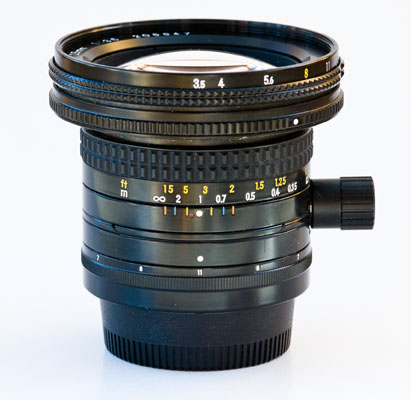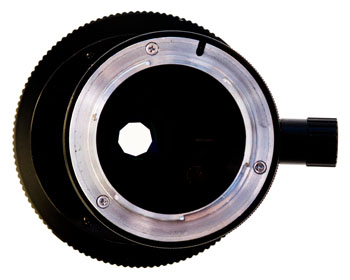 When a camera is directed towards a large subject, such as a nearby building, it may be necessary to angle it upwards to include the whole structure in the frame. A consequence of doing this is that vertical lines, such as those of the sides of a rectangular building, appear to converge. This effect is common known as "converging verticals". The phenomenon can be attractive, and may also be used creatively. However, in many instances converging verticals look unnatural in an image.
When a camera is directed towards a large subject, such as a nearby building, it may be necessary to angle it upwards to include the whole structure in the frame. A consequence of doing this is that vertical lines, such as those of the sides of a rectangular building, appear to converge. This effect is common known as "converging verticals". The phenomenon can be attractive, and may also be used creatively. However, in many instances converging verticals look unnatural in an image.
Shift lenses, sometimes known as perspective control (PC) lenses, feature a very large image circle. This allows the lens to be moved up and down or from side to side relative to the image plane. (The image on the left shows a Nikon 28mm f/3.5 PC lens.)
A camera equipped with a shift lens can therefore be maintained in a horizontal plane because a subject which would normally extend out of the top of the frame can be moved vertically downwards relative to the image plane. The perspective of the shifted image remains unchanged and vertical lines do not converge.
 A typical 35mm-format shift lens allows an image to be moved about 10 -12mm, which represents half the height of a landscape format frame. Since images are inverted at the plane of the film or sensor, moving the lens upwards will move the recorded image down. The image on the right (below) shows the maximum shift possible in the case of the Nikon 28mm f3.5 PC lens.
A typical 35mm-format shift lens allows an image to be moved about 10 -12mm, which represents half the height of a landscape format frame. Since images are inverted at the plane of the film or sensor, moving the lens upwards will move the recorded image down. The image on the right (below) shows the maximum shift possible in the case of the Nikon 28mm f3.5 PC lens.
The disadvantages of shift lenses are that they make exhibit a fall-off of light towards the corners of the frame, and exposures can be difficult to get right as the shift increases and the darker areas of the image fall within the frame. They also tend to have relatively small maximum apertures, and are generally expensive to buy because of the additional mechanical movement that must be accommodated in the design. No autofocus shift lenses are currently available.






